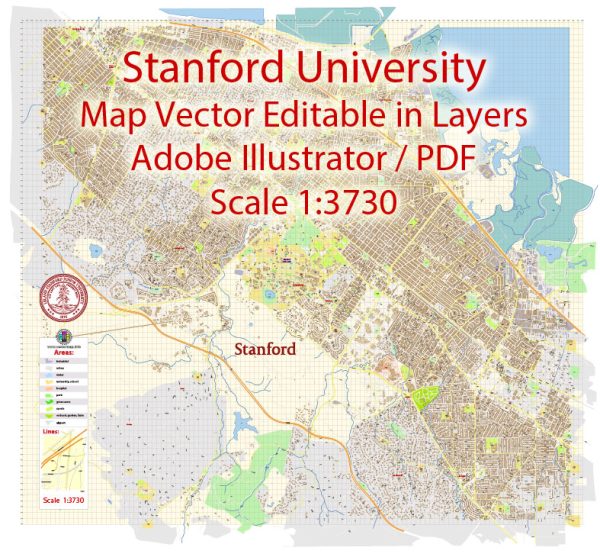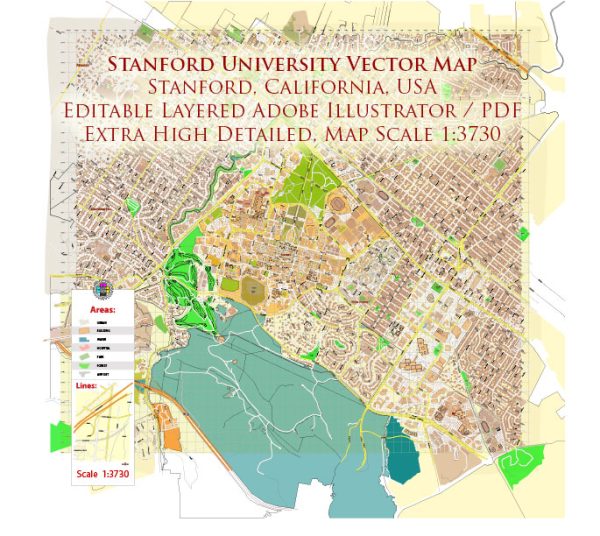Stanford University, located in Stanford, California, has a unique history of urban development closely tied to the university’s founding and growth. The university is situated on the former grounds of the Leland Stanford Jr. Stock Farm, a large estate owned by Leland Stanford, a prominent California politician and one of the “Big Four” who played a crucial role in the development of the Central Pacific Railroad.
Here is a brief overview of the history of Stanford University’s urban development:
- Founding and Early Years (1885-1906): Leland Stanford founded Stanford University in 1885 in memory of his son, Leland Stanford Jr., who had died at the age of 15. The university was established with the vision of creating a coeducational and non-denominational institution that would contribute to the intellectual and cultural development of California and the West. The original campus plan was designed by landscape architect Frederick Law Olmsted, and the university officially opened its doors in 1891.
- 1906 Earthquake and Rebuilding: In 1906, a devastating earthquake struck the San Francisco Bay Area, causing significant damage to the Stanford campus. The university decided to rebuild, and the task fell to architect Charles Allerton Coolidge. The new campus design departed from Olmsted’s original plan, featuring a distinct Beaux-Arts architectural style. The main axis of the campus, Palm Drive, was retained, but the overall layout and architectural aesthetic shifted.
- Post-World War II Expansion (1940s-1960s): After World War II, Stanford experienced a period of significant growth and expansion. The GI Bill brought a surge of veterans to college campuses, and Stanford saw an increase in enrollment. This growth led to the construction of new academic buildings, student housing, and research facilities. Notably, the university’s emphasis on research and innovation attracted faculty and students, contributing to the development of Silicon Valley as a technology hub.
- Modern Era and Continued Growth: In the latter half of the 20th century and into the 21st century, Stanford University continued to evolve and expand. The university’s commitment to cutting-edge research and technology played a pivotal role in the development of Silicon Valley. The campus has seen the construction of state-of-the-art facilities, including the Stanford Research Park, which has fostered collaboration between academia and industry.
- Sustainable Development and Campus Planning: In recent years, Stanford has placed a strong emphasis on sustainable development and environmental stewardship. The university has implemented measures to reduce its environmental impact, promote energy efficiency, and enhance the overall sustainability of the campus.
Overall, Stanford University’s history of urban development reflects not only its academic and cultural evolution but also its influence on the broader region of Silicon Valley and the state of California. The campus continues to be a dynamic hub of innovation, education, and research.



 Author: Kirill Shrayber, Ph.D.
Author: Kirill Shrayber, Ph.D.